The Courtly Hokusai: Heian Literature in Edo
- Michi

- 2024年10月2日
- 読了時間: 4分
更新日:2024年10月8日
A Special exhibition is now on view from September 18th to November 24th, 2024.
It features the works related to the Heian period (794-1185) or court culture by Hokusai and painters in the Edo period (1603-1867).
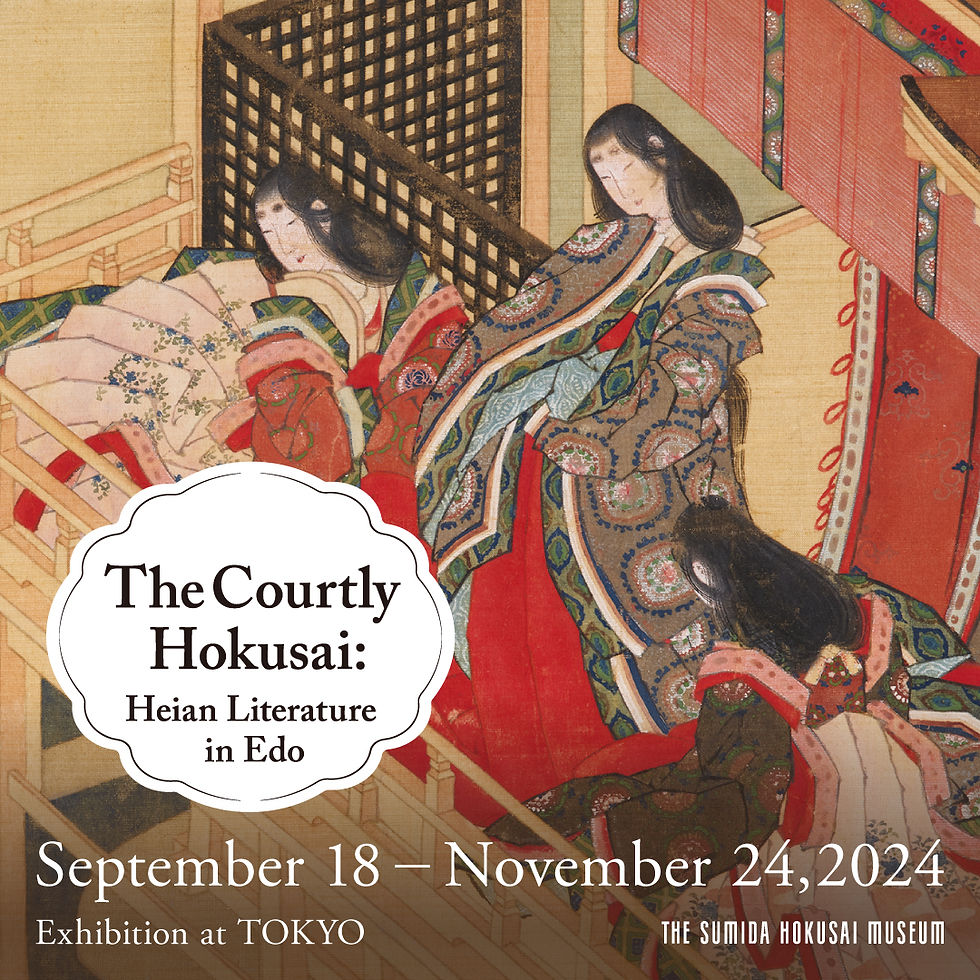
There was a surge in depictions of imperial court customs and literature in the Edo period, driven by research on the Heian period, education in the classics, a flourishing publishing industry, and widespread availability of books.
Hokusai and his students depicted court figures and life, taking their subjects from court literatue such as The Tale of Genji and The Tales of Ise. And they also incorporated court-related designs in kimonos and accessories in their works.
You will be amazed by the displays which are far beyond what you expected based on your prior knowledge of Hokusai's works.
[INTRODUCTION] The People of Edo’s View of Heian
During the Edo period, Heian literature has become available to people in Edo. The copies of classic literary works such as The Tale of Genji or The Tales of Ise and books explaining them circulated widely. And thanks to the scholars' efforts, the Kokin Wakashū Poetry Anthology and other collections of Heian-period poetry became generally available. And paintings of the poetic immortals became a popular theme. Through classical literature and legends inspiring Kabuki and other forms of entertainment, people in Edo interpreted and used these materials to form their own unique images of what life in the Heian period was like, looking back in those old days (794-1185).
You can see works that present the background behind the formation of those Edo-period images of Heian.

It appears she has just bocome a young courtesan. Classical knowledge was a vital part of their training for Oiran and other high-ranking courtesans.
[Section 1] Formation of a Courtly image
Hokusai and his colleagues skillfully depicted the scenes from the imperial court and everyday life, offering a glimpse into the vibrant life of the Heian period. The capital city was a melting pot of ideas from Asian mainland and Japan's ancient beliefs.
You can see works how the lifestyle, culture, and supernatural beings of the Heian period were imagined.
◆Part 1: Living in the Capital◆

Hokusai took the subject matter from, for example "Young Murasaki" (Chapter 5) or "The Maiden of the Bridge" (Chapter 45) of the Tale of Genji.
Hokusai elaborately portrayed the garments, the bamboo blinds, and the plants with fine brushwork.
◆Part 2: Fear of the Bizarre◆

[Section 2] Court Literature Depicted
During the Edo period, many artists took the court literature as themes.
Hokusai and his students portrayed Heian literature such as The Tale of Genji and The Tales of Ise, in a unique style, depicting Edo-period hairstyle and clothing within the context of Heian literature.
You can see abundance of their works depicting court literature.
.
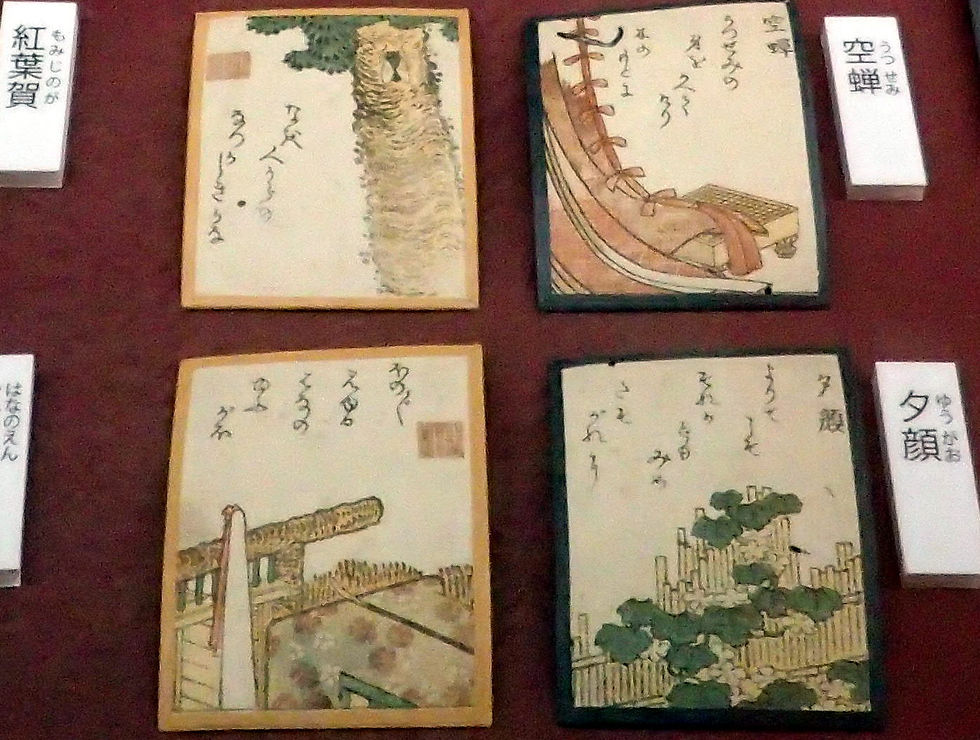
Katsushika Hokusai, Fashionable The Tale of Genji Poem Card,
The Sumida Hokusai Museum (all term)
Different cards are displayed in the 1st term and the 2nd term.
Taken by Michi at the press preview

This work suggests that the figure is probably "Young Murasaki" , judging from the kyoka verse and the birdcage behind her.

Hokusai depicted jealous Miyasudokoro from The Tale of Genji, adding the black haze which contributed to make people feel ominus atmosphere.

Hokusai depicted a parody picture addressing Onnasannomiya (the Third Princes) in The Tale of Genji. It was probably zodiac animal when Hokusai created this work that a monkey was depicted instead of a cat of her pet.
◆Works related to The Tales of Ise◆
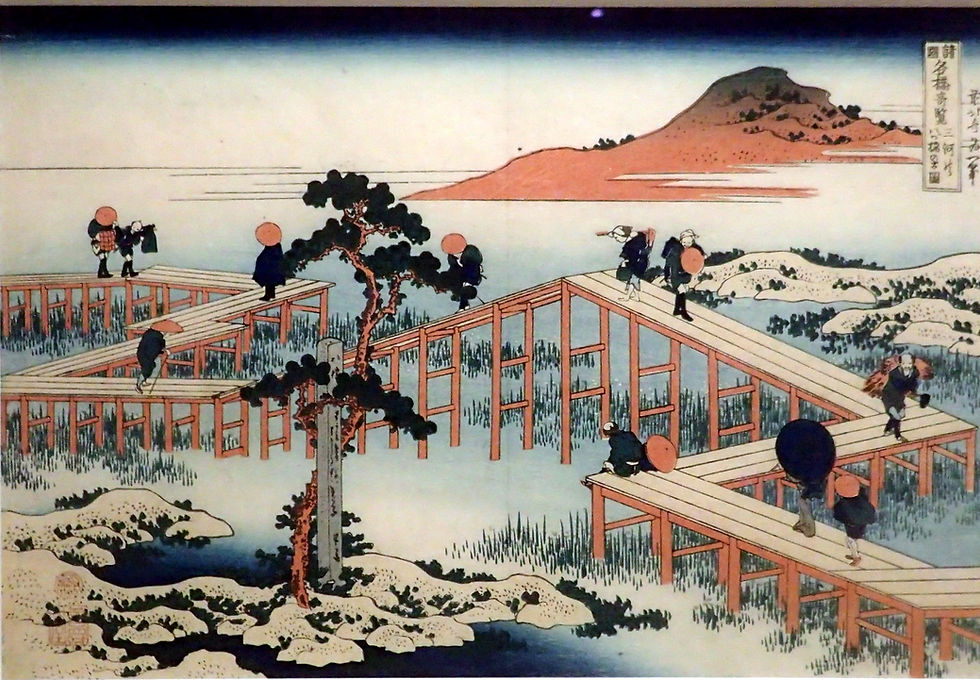
Katsushika Hokusai, Old View of Yatsuhashi Bridge in Mikawa Province, from the series Remarkable Views of Bridges in Various Provinces
The Sumida Hokusai Museum (all terms)
*Different print of the same title is displayed in 1st term and 2nd term.
Hokusai depicted as if people in the Edo period were enjoying the irises blooming in the marsh as they crossed the bridge, as he used the word "Old View" in the title.
◆Works related to Makura no Sōshi (The Pillow Book)◆

Katsushika Hokusai, Blossoming Plum Branch, from the series The Immortal Poets
The sumida Hokusai Museum (1st term)
The subject is thought to be Sei Shonagon and her The Pillow Book. The Japanese plum blossoms and the motifs of kimono printed in silver can be seen.
[Section 3] Designs Related to Court Literature
Hokusai and his students incorporated the motifs associated with The Tale of Genji, and depicted clothing and accessories decorated with those motifs.
You can see works deicting those motifs.
◆Part 1:Motifs with Literary Associations◆
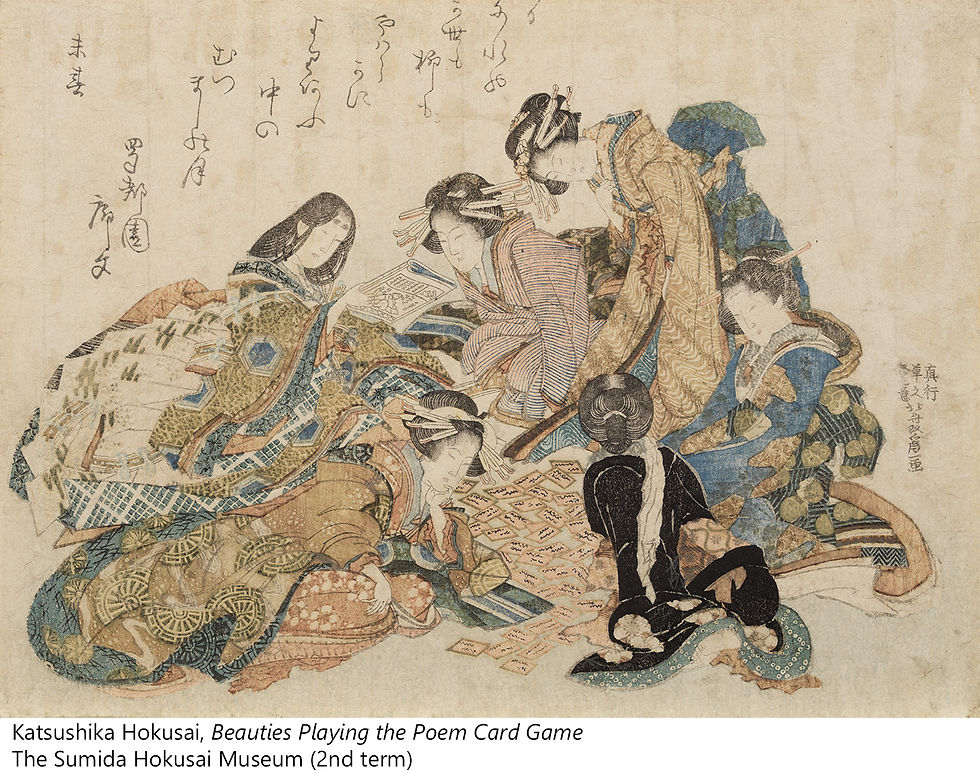
Please look at the left front woman resting her chin on her hands. You can see Genjiguruma motifs on her kimono. The Genjiguruma is said to have developed as a motif from Japan's medieval period to the Edo period; these designs are stylized versions of wheels of oxcarts used only by members of the imperial family and nobility in the Heian-period.
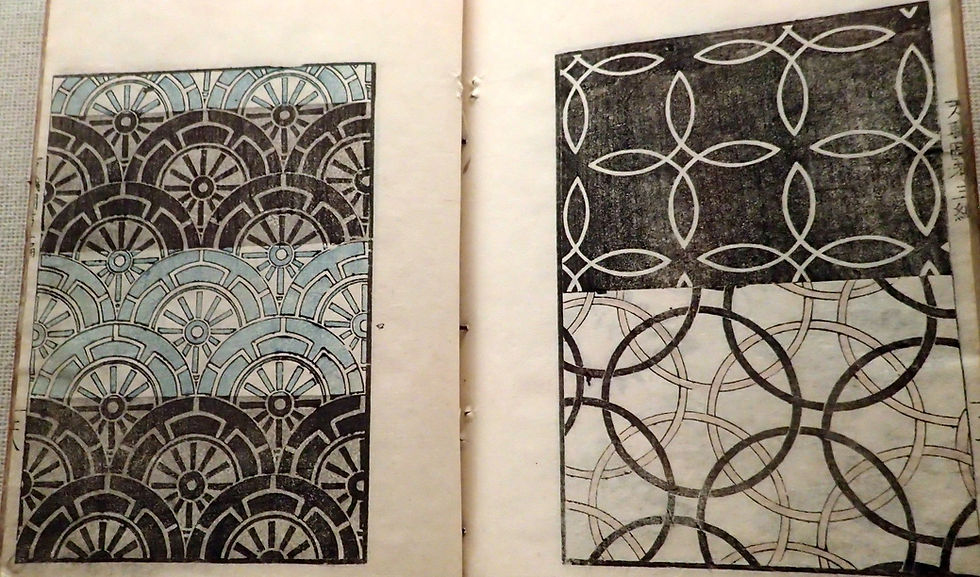
Katsushika TaitoII, Designs for All Craftsmen, Vol.3
The Sumida Hokusai Museum (all terms)
Taken by Michi at the press preview
◆Part 2: A Scene Becomes a Design◆
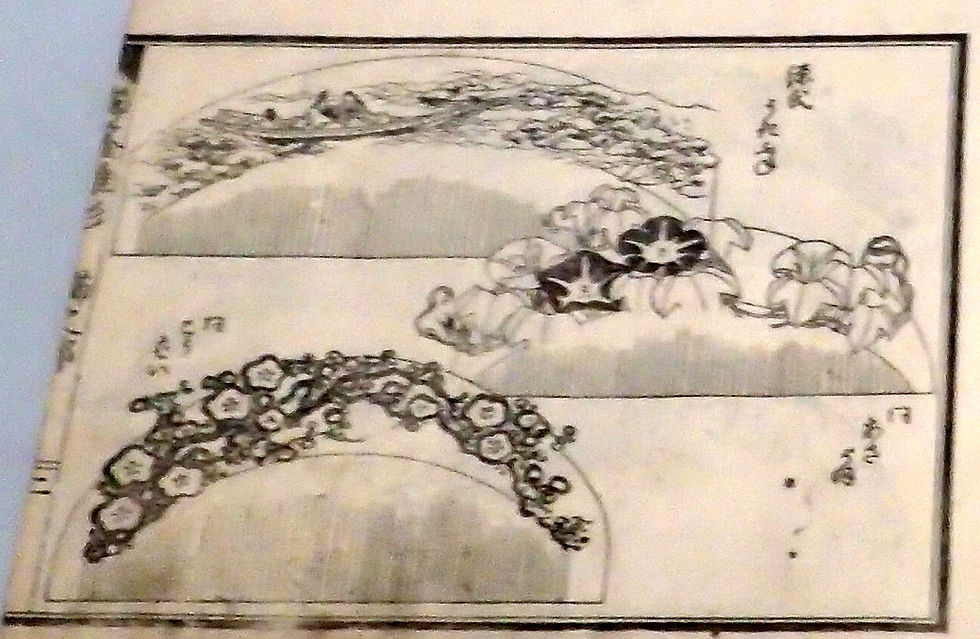
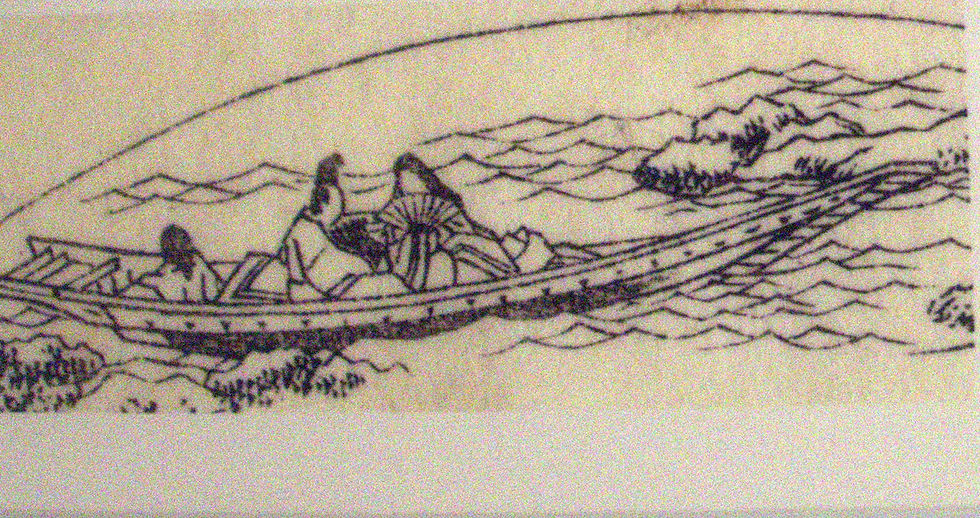
Katsushika Hokusai, "Ukifune" Chapter in the Tale of Genji, from
Modern Designs for Combs and Tobacco Pipes: combs, vol.1
The Sumida Hokusai Museum (all term)
Taken by Michi at the press preview
Hokusai compiled a drawing manual containing designs for combs and pipes.
You can see the image above depicting Ukifune and Niō Miya aboard a boat crossing the Uji River to a secret residence on the opposite side of the River.
For more information, please access here.







コメント